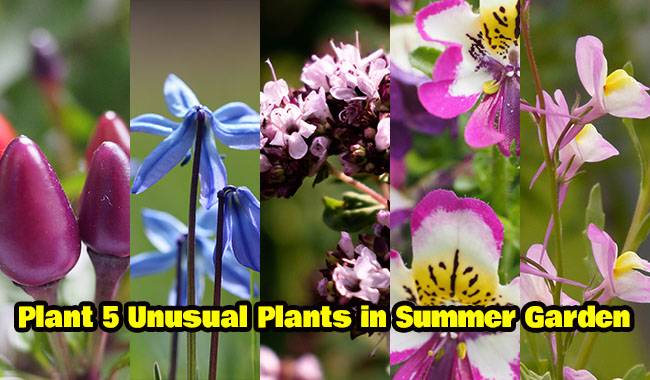
Each year I certainly enrich my floricultural experience by growing new and interesting plants. Some of them are new to me personally, others are new to the world of choice. Each year, the promoters offer interesting annual flower cultivars. Many of them have taken root in my garden or on my balcony and have become favorites. In this article, I want to tell you about the interesting annuals I came across last year. All the described annuals are easy to grow from seed and easy to take care of. Maybe you will like them too. You will learn Plant 5 Unusual Plants in Summer Garden in the ThumbGarden article.
Capsicum annuum (Sweet And chili pepper)
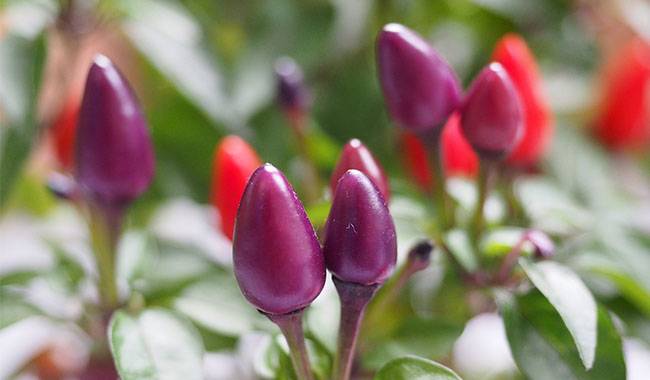
Most dwarf ornamental pepper (Capsicum annuum) varieties have super hot spicy fruit but are rarely used as a condiment. The main advantage of this type is its very flashy appearance. Of all the ornamental pepper varieties, the one that impressed me the most was the mottled variety.
This plant is a true dwarf, measuring no more than 10 inches (25 cm) in height. Its narrow conical fruits are also quite small – 0.5 mm in diameter and up to 1 inches (2.5 cm) long. This pepper is notable for its brightly colored fruits, which are intricately oriented upward. Young peppers are purple, then turn orange, and finally deep red. In this way, a rich variety of colors can be observed on a single shrub.
The mottled leaves give the plant an additional decorative effect. capsicum annuum peppers have dark green, slightly purple leaves with a random pattern of white. The patterns on the leaves of these peppers can already be seen on the very first true leaves, while the cotyledons have no patterns.
Growth peculiarities
Capsicum annuum ornamental pepper is a very plain crop but can encounter some difficulties in the initial stages of growth. First, keep in mind that dwarf ornamental peppers, including this variety, take much longer to germinate than bell peppers, and this is not uniform. On average, seeds of these peppers, even if pre-soaked in a germination booster, do not germinate until a month after sowing.
It is not unusual for one of the “boldest” seeds to germinate after two weeks and the rest to emerge after 1-1.5 months. However, it is also possible not to wait for a single seed to germinate. Given this peculiarity of ornamental peppers, I recommend buying seeds in reserve and sowing them as early as possible (in January).
Capsicum annuum peppers are extremely slow-growing at first. However, you may be surprised when, on a small 2 inches (5 cm) bud, the first flower appears and the pepper starts to bear fruit. Then, it moves up and branches more vigorously. After planting in mid to late May, care will continue through regular watering and fertilization with a liquid fertilizer every 2-3 weeks.
These little bushes of peppers look most decorative when loose, but a clump or two in a small clay pot in the kitchen also looks charming. I also really like the idea of creating small container combinations of dwarf vegetables with these gorgeous peppers.
Laurentia (Isotoma)
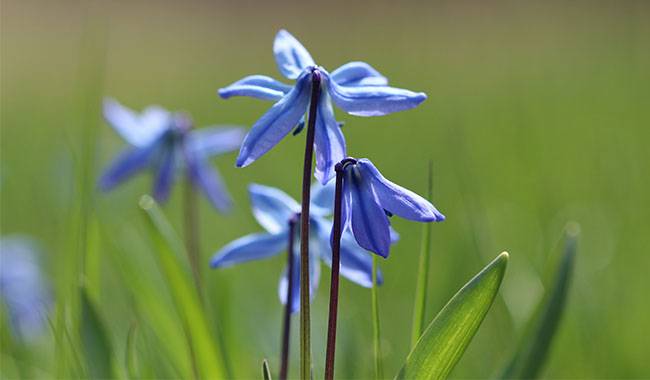
Laurentia, or Isotoma, is an unusual and rare annual plant with a very delicate blue-purple color. Its star-shaped primitive flowers are not easily recognized as bellflowers. But in fact, Laurentia can be called a variety of this flower because it belongs to the bell family.
Since I am very fond of bells, this plant also attracted me. The bush is 10-12 inches (25-30 cm) tall and has a spreading habit that is very delicate and atmospheric. During the flowering period, Laurentia is covered with many small star flowers on the thinnest stems.
The leaves are oblong and very sculptural, and at first, a glance may even look a little stabby. The flower itself has a long tube that forks into five elongated, pointed petals. A flower is 1-1.35 inches (2.5-3.5 cm) in diameter. The most common color is blue, but it can also be pink or beige. another benefit of Laurentia is its wonderful fragrance. For me, it is similar to the scent of lilies but much more delicate.
Speciality of growth
Laurentia is a plant with a long growing period, so I sowed it very early, in mid-February. The seeds are very small and should not be covered with soil. They are placed on the surface, slightly pressed into the substrate, the container is covered with a film and kept in a bright place. New shoots will appear in about a week. Laurentia seedlings need light. In natural light, even in the brightest window, my seedlings stretched a lot and looked stunted.
Even with such early sowing, Laurentia did not bloom until early July. Thereafter, the plant blooms all summer without removing the flowers that have already bloomed. Laurentia can be planted in the sunniest spot, alone or with large-flowering annuals.
Origanum ‘Kirigami’
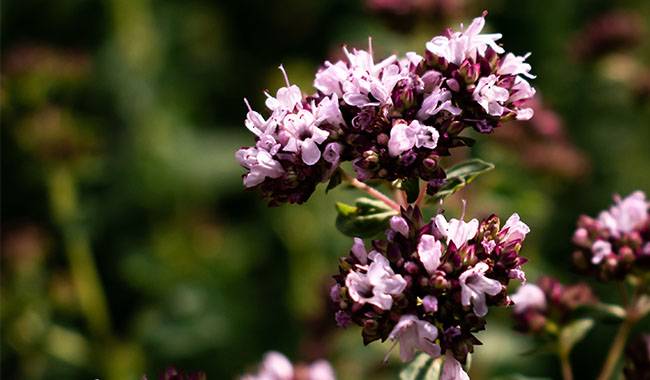
Oregano to Origanum, a well-known popular herb and medicinal plant. There are many ornamental Origanum varieties with attractive appearances and characteristic fragrances. Many of them overwinter well in the central region. On the other hand, Origanum ‘Kirigami’ is a heat-loving crop that can be grown as a summer plant or as a houseplant. However, it is very easy to grow from seed.
Origanum has the most distinctive appearance in the genus. It is valued mainly for the unusual shape of its spikes, which consist of purple, double-lipped florets, and large round bracts of purple and lettuce. When dried, the inflorescence retains its shape and can be used as a dried flower.
The leaves are rounded, pendulous, and strongly scented. origanum ‘Kirigami’ bush is hanging and looks very attractive in hanging baskets as an ampelopsis. The bushes are 8-10 inches (20-25 cm) tall and can grow to 12-14 inches (30-35 cm) wide. Despite its pleasant, pungent aroma, Origanum is not used as food, but only as an ornamental plant. It is very drought tolerant and will grow well in full sun.
Growth peculiarities
To ensure that ornamental Origanum has time to grow into a full plant that looks particularly spectacular, start sowing seeds as early as possible – in January-February. Press the seeds lightly into the soil to surface them. new shoots will appear soon after 4-7 days. But at first, the seedlings grow slowly. Seedlings take 90-100 days to grow.
Origanum is transplanted into gardens or containers only after the threat of frost has passed. It is best brought indoors to overwinter before severe temperatures below 32 °F (0°C) begin, although minimal frost will liven up the bracts and enhance the purple hue.
My experience with ornamental Origanum has not been too successful, as I sowed the seeds a bit late and the plants did not have time to acquire asexual propagation during the season. But the unusual structural earrings look really extravagant, so I’m going to try growing Origanum again.
Schizanthus
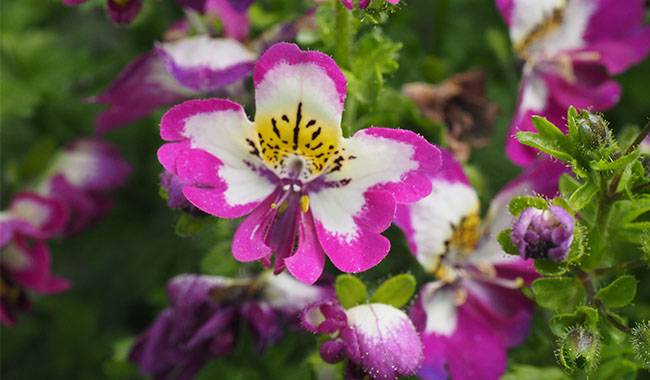
I first saw Schizanthus in a city garden many years ago while traveling in Europe, but, as it turns out, not all Schizanthus have such large mottled butterfly inflorescences. Only the hybrid series ‘Atlantis’ has such conspicuous orchid-like florets.
This species features a distinctive border with various shades of red and purple. For example, ‘Lilac Bicolor’ has a purple border that frames the white and bright yellow pattern in the center of the flower. The least mottled variant in the “Pure Crimson” series has two shades of crimson.
Schizanthus has very attractive, airy, sculpted foliage. Its bright, self-sufficient appearance and exotic shape make this flower impeccably beautiful, but it is also difficult to arrange with other annuals. Group plantings of Schizanthus in the same color family are best or combining several variations of the same series. And the best neighbors of this exotic may be houseplants that are taken out of the garden in the summer.
Speciality of growth
Schizanthus can be used as a short-lived houseplant or as annual bedding, so the timing of sowing will vary. Since I intended to use it for my outdoor terrace, I sowed it in early March. Schisanthus germinates very quickly and is not at all troublesome as a seedling.
In the specialized literature, it can be found that the weakest seedlings produce the most interesting flowers, and this observation proved to be correct. The lowest seedlings I sowed later proved to be the most abundant bloomers and maintained a compact shape. But usually, Schizanthus is very irregular in height – from low shrubs no more than 8 inches (20 cm) to specimens about 16 inches (40 cm) tall.
Schizanthus blooms very profusely for several months, but individual specimens may die for no apparent reason after the main peak of flowering. So keep in mind that the “poor man’s orchid” is a very unpredictable plant.
Linaria maroccana
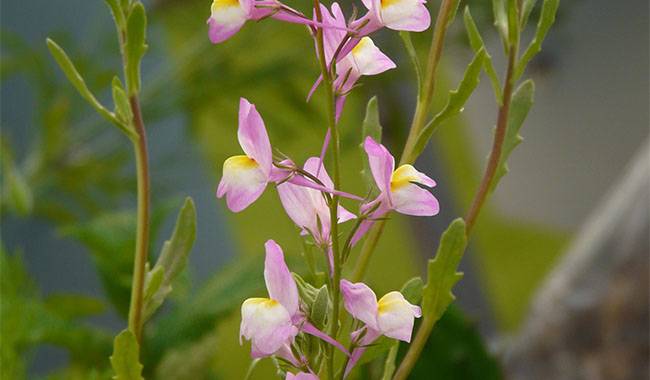
Almost all plant lovers are probably familiar with “meadow dog”, which may be mistakenly referred to as “wild” poodle. In fact, despite their similarity, they are not liongrasses, but a separate genus, Linaria.
This plant has also found its place in ornamental horticulture. Recently, Western breeders have introduced an interesting innovation: the hybrid dwarf flax plant series “Linaria Fantasy” and “Linaria Fantasista “. These lines are characterized by fine growth, strong basal branching and long flowering periods. However, the “Fantasista” series blooms 7-10 days earlier than “Fantasy”.
Both series include monochromatic (pink, mauve, yellow, white, crimson) and bicolor (most often with a yellow spot in the center of the flower). If you plan to grow hybrid flax, be aware that it is quite small 2-4 inches (5-10 cm). It is best not to combine it with other flowers, otherwise it will be easily lost.
Growth peculiarities
Like Lionflower, Linaria is a very hardy crop that can withstand brief frosts of up to 41 °F (5 °C.) Sown in April, the seeds germinate quickly and the seedlings grow rapidly, beginning to branch on their own very early. Flowering takes place in June and lasts for one to two months. To extend the total flowering time, multiple sowings at intervals of 2 weeks or longer are recommended.
Group plantings of Linaria maroccana look very delicate and resemble watercolor paintings. Linaria plants are easy to care for and grow well in full sun and light shade with regular watering and fertilization with a compound fertilizer. After the first wave of flowering, it is recommended to prune and fertilize the shrubs.
Dear readers if you have planted any rare new varieties in your annuals, please tell us about them in the comments of the article. We would be very grateful for your information!







